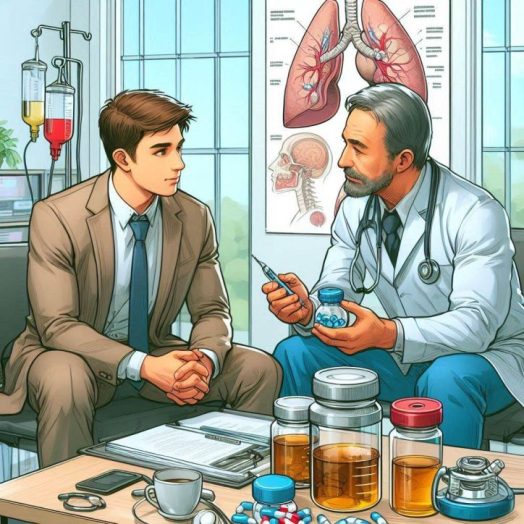Steroid Use and Post-Cycle Therapy (PCT): How to Recover Safely

Anabolic steroid use can cause significant hormonal disruptions. While these substances help build muscle and enhance performance, they also suppress natural testosterone production. Once a cycle ends, the body struggles to restore its hormonal balance, leading to fatigue, mood swings, and muscle loss. This is where Post-Cycle Therapy (PCT) becomes essential.
Recovering safely after steroid use requires proper planning. Many turn to Syn Pharma to ensure they have high-quality substances for both their cycles and PCT. However, without a structured recovery plan, users risk prolonged hormonal imbalances and other health complications. PCT is a crucial step that helps the body transition back to normal function, reducing the risk of side effects and long-term damage.
Understanding the Risks of Anabolic Steroid Use
While steroids accelerate muscle growth, they also come with risks. The body responds by shutting down its natural testosterone production, which can take weeks or months to recover. Some common side effects include:
- Testosterone suppression
- Acne and oily skin
- Hair loss
- High blood pressure
- Gynecomastia (development of breast tissue in men)
- Increased aggression and mood swings
- Suppression of good cholesterol (HDL), raising the risk of cardiovascular disease
Long-term use may also increase the risk of heart disease, kidney damage, and liver stress. These effects can be prolonged or even permanent without a proper PCT plan. In some cases, users may develop dependency, leading to psychological withdrawal symptoms such as depression and anxiety.
What Is Post-Cycle Therapy (PCT)?
PCT is a structured approach to help the body restore its natural hormone levels after a steroid cycle. The goal is to restart testosterone production while minimizing side effects. This process usually involves medications, supplements, and lifestyle changes.
Common PCT Medications
Selective estrogen receptor modulators (SERMs) and aromatase inhibitors (AIs) are the primary drugs used in PCT. These include:
- Clomid (Clomiphene Citrate): Stimulates the pituitary gland to produce more luteinizing hormone (LH) and follicle-stimulating hormone (FSH), boosting testosterone production.
- Nolvadex (Tamoxifen): Works similarly to Clomid but is often used for controlling estrogen-related side effects like gynecomastia.
- Aromatase Inhibitors: Help control estrogen levels to prevent hormonal imbalances.
- hCG (Human Chorionic Gonadotropin): Often used to stimulate natural testosterone production before beginning PCT.
Natural Supplements for Recovery
Beyond prescription medications, natural supplements can aid recovery. Some effective options include:
- Zinc and Magnesium: Support testosterone production and immune function.
- Vitamin D: Helps regulate hormones and improves overall well-being.
- Ashwagandha: Reduces cortisol levels and supports stress management.
- D-Aspartic Acid (DAA): Stimulates natural testosterone production.
- Omega-3 Fatty Acids: Help reduce inflammation and support heart health.
Lifestyle Changes to Support Recovery
Recovery doesn’t stop with medications and supplements. Daily habits play a crucial role in restoring hormonal balance. To speed up recovery, consider these strategies:
1. Prioritize Sleep
Quality sleep is essential for hormone regulation. Aim for at least seven to nine hours of rest each night. A consistent sleep schedule helps optimize testosterone production.
2. Eat a Balanced Diet
Nutrition impacts hormone levels. Include protein-rich foods, healthy fats, and complex carbohydrates. Avoid processed foods, excessive sugars, and alcohol, which can hinder recovery. Foods like eggs, nuts, lean meats, and leafy greens help provide essential nutrients for hormonal health.
3. Stay Active but Avoid Overtraining
Exercise helps maintain muscle mass, but overtraining can increase cortisol levels and slow testosterone recovery. Focus on resistance training while incorporating rest days. Low-intensity activities like yoga or swimming can help support recovery without stressing the body.
4. Manage Stress
High stress leads to elevated cortisol, which negatively impacts testosterone. Practices like meditation, deep breathing, and time outdoors can support hormonal balance. Limiting caffeine and prioritizing relaxation techniques can also help maintain a stable mood.
5. Stay Hydrated
Proper hydration supports overall health and detoxification. Drinking enough water ensures that the body functions optimally and aids in removing toxins that may accumulate during steroid use.
When to Seek Medical Guidance
While many recover naturally, some experience prolonged side effects. If symptoms like depression, low libido, or chronic fatigue persist, consulting a healthcare professional is crucial. Blood tests can help assess hormone levels and determine if medical intervention is needed.
READ ALSO: Steroid Use and Recovery: Managing Side Effects
Final Thoughts
Using anabolic steroids comes with risks, but with the right PCT plan, recovery is possible. A structured approach involving medications, supplements, and lifestyle changes helps restore hormonal balance. Always prioritize health and consult professionals if necessary to ensure a safe recovery.
Whether you are a professional athlete or a casual gym-goer, taking care of your body should always be a top priority. Short-term gains are not worth long-term health complications. A well-planned PCT regimen can make all the difference in bouncing back stronger and healthier.